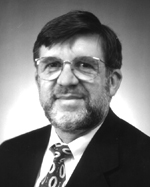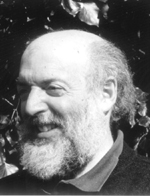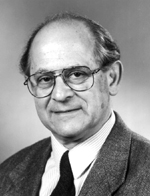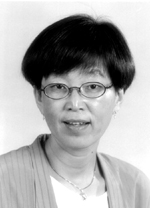From the Office of the Senate Advisory Committee on University Affairs
Editor’s Note: Following are statements by candidates for the Senate Advisory Committee on University Affairs (SACUA). Three members will be elected toserve three-year terms at the March 20 meeting. The new members will succeed Barbara MacAdam and Lewis Kleinsmith. John Gobetti, currently a SACUA member, is running for reelection.
Katherine Beam

No one running for election to SACUA would likely question the basic tenet that faculty involvement in institutional and academic unit governance is a worthwhile activity, one to be pursued and developed. The issue is not whether one should participate, but rather how one is able to do so given the demands of teaching, research, and management. How does the faculty promote and hold an interest in governance among its members; how does the leadership draw on knowledge and expertise that are present but untapped? The challenges facing an academic institution of this complexity and quality are always present, varying in detail from year to year, but constant in their need to be addressed by the best mix of minds that faculty and administrators can attract. It is incumbent on faculty at every level to direct their energies at one time or another to the needs of the University at large, to offer whatever skills and wisdom each possesses in a partnership with the administration in solving the primary concerns of the day.
This need to incorporate faculty as partners with the administration is my principle reason for wanting to serve on SACUA. I have followed this pattern, working on behalf of the University Library and its librarians, as well as participating in groups concerned with campus-wide issues. I currently serve as cChair of Librarians’ Forum, the organization of University lLibrarians established to promote their interests and services throughout the campus community. We have instituted a new set of policies and procedures for the classification and promotion of all librarians and are presently engaged in developing procedures for the funding of librarian research as well as studying the policies and applications concerned with merit review. I have served on Senate Assembly, and during my tenure on the Academic Affairs Advisory Committee, we created the document, “Principles of Faculty Involvement in Institutional & Academic Unit Governance at the University of Michigan.”
Beam has been a librarian at the U-M since 1983. Her recent research resulted in a CD-ROM titled From Papyri to King James: The Evolution of the English Bible, which won for Beam and co-author Prof. Traianos Gagos the University of Michigan Press Book Award in 1999. She currently is curator of humanities collections in the Special Collections Library.
John Gobetti

I believe strongly that faculty governance is a shared responsibility for both faculty and the administration. The administration has an obligation to support faculty governance in action and in deed. The faculty, for its part, must protect faculty governance as a basic right and duty of its own. This does not mean that faculty and administrations are set in adversarial roles against one another. Rather, they have equal voices as partners in formulating and implementing policy. The unique perspective that each provides must be combined together through cooperation and mutual guidance.
I have shown my active commitment to this philosophy throughout my 30 years as a member of this faculty. In these years I have served in a large number of unit (School of Dentistry) and University committees where I have contributed actively toward making faculty governance result in excellence in teaching and research. I have served on SACUA; the Senate Assembly; the Committee on the Economic Status of the Faculty; on subcommittees for fringe benefits and retirement and university relations; and the Financial Affairs Committee. I have chaired grievance review boards, and I have been a member of numerous appointment, promotion and tenure committees.
I see many challenges to the University and the faculty in the areas of state financial support and research funding, as well as in academic freedom, the autonomy of the University, tenure, faculty rights, and in new technologies such as distance learning, note-taking services, Web sites and other areas.
I would like to contribute and participate in the Senate Advisory Committee on University Affairs, and to work with the administration for the benefit of the faculty and the University. I believe that my experience and commitment make me uniquely qualified to do this.
Gobetti has been a faculty member for more than 30 years and has won more than 20 teaching awards at all levels (undergraduate, graduate and postgraduate). His areas of clinical research and expertise are in the field of oral medicine. He will bring a broad range of experience and accumulated wisdom to SACUA, especially after having served one year on SACUA, since May 1999.
Charles Koopmann

The University community faces challenges that require that the administration, faculty and students work together to achieve common goals and to solve mutual problems. It is imperative that the faculty have strong leadership to ensure that it will be adequately represented in the decision-making in the areas of teaching, faculty governance, promotion and tenure policies and decisions, budget priorities, balancing the academic triad (education, research and service), and the implementation of the Principles of Governance for the faculty of all schools in the University of Michigan system. SACUA members must work with the students and the administration to maximize our educational environment for all members of the academic community. We must improve communication and collaboration between the various campuses and schools in this diverse institution while, at the same time, be innovative and collaborate with governmental and business colleagues who share common interests and goals. Finally, SACUA must strive to find ways to assist faculty to deal with the increased demands placed on its members to ‘do it all.’
Koopmann was a faculty member at the University of Arizona (1977-86) before coming to the U-M in 1986. In 1994-1996 he completed his studies at the School of Public Health to earn a master’s of health services administration degree and in 1998 obtained a Certificate in Medical Ethics from the University of Washington. He is professor and associate chair of the of the Department of Otolaryngology, chief of pediatric otolaryngology, and a member of the Faculty Group Practice Board of Directors at the Medical School. He has served on departmental, Medical School and University tenure committees (currently chairing the University’s Tenure Committee) and serves on the Academic Affairs Advisory Committee. He was one of the authors of the “Principles of Faculty Involvement in Institutional and Academic Unit Governance at the University of Michigan” and the Tenure Committee Principles document (recently approved by the Faculty Senate) and recently served on the ‘Do It All’ Task Force and the Faculty Senate. He has served as an officer in several national societies (president of one) and is currently a member of an American Medical Association Relative Value Update advisory committee to the Health Care finance Administration.
Rudi Lindner

Do you remember this University as it once was? Less than 20 years ago, the slogan “smaller is better” held out an austere future before us. The intervening years have witnessed instead a surprising expansion of physical plant and intellectual aspiration, and the Life Sciences Initiative will work a transformation of the space between the Central and Medical Campuses, unparalleled since the erection of the Cooley Memorial in 1915. What was once the lair of the IRS near Briarwood in now a tower and plaza dedicated to personnel and benefits, no longer and integral part of a physical community of classrooms and laboratories. What impacts will this continuing growth and complexity have on our governance, our relationship with the administrators, and our capacity to think and act as one community of researchers and teachers?
We have all, staff, faculty and administrators, experienced the misunderstandings that can and do arise when growth, unpublicized external constraints and imperfect communication combine with the distance between those who decide and those who have simply been going about their business: whether the M-CARE initiative remains dead is a question still raised in faculty discussions about benefits. In the past two years, a major cost-saving initiative for long-term illness and disability management worked its way through the hospital, human resources, financial offices and administration, with one faculty member serving on the design committee. Maybe I did a good job, but there were times when I sure felt lonely. We are in a partnership with not only students and administration but also with the Hospitals, the benefits officers who manage our care and design the health and retirement packages for our future, and the lobbyists who, without knowing us well, must hold out our begging bowls. Growth and specialization have separated us from many of our partners, and we cannot afford the assumption that our paths remain parallel.
This partnership should become more active, equal and respectful of the need for growing diversity. At a time when the cost of a U-M education at all levels has altered the character of our studentry, we may be able to assist the admissions officers in formulating what has become marketing strategies. Their business is not the same as our business, but their decisions constrain our teaching. There are substantial and occasionally grotesque disparities between the rewards for adjunct and regular faculty. Can we claim to offer students the same quality if we approve these disparities through silence? For two years, your Committee on the Economic Status of the Faculty (CESF) developed a set of guidelines for compensation policies. The significance of this issue came again to the fore in Prof. Kossoudji’s remarks to the Senate Assembly concerning published salary statistics. The majority of the faculty who did not get market adjustment raises may wish to look further into the ongoing negotiations with the administration.
I do not claim to be the best or only qualified colleague to press forward; but I am supposed to be a pretty good nudge. My service includes chairing CESF, the LS&A Curriculum Committee and the ROTC Credit Review Committee, as well as serving on the Joint Faculty-Student Policy Committee, the Long-Term Illness/Disability Benefits Review Committee (to set up the Work Connections Program), the U-M Press board and various area studies committees. I have been a fellow of the U-M Collaboratory for the Humanities and have won various fellowships, including NEH and Fulbrights to Turkey, Italy and Israel. I study Byzantine and early Turkish history, medieval monetary history and the history of astrophysics. I have written two books on the history of the steppe nomads. My most recent article is on early Ottoman historiography, and my most recent writing is about America’s first female astrophysicist.
Jon Rush

As the University changes to meet the challenges of the new millennium, faculty must work with the administration to address recent issues such as the increasing numbers and role of non tenure track teaching staff. Ongoing issues related to the traditional role and expectations of the tenured faculty must be examined and strengthened. The proportion and synergy between these two groups will be major factors affecting the future quality of the teaching and research environment of the university. The university has been a major part of my life experience. I worked at my unit level to develop the first Bylaws of the School of Art and Design, creating its first executive committee in 1978. In 1996-97, I chaired the Academic Affairs Advisory Committee, which developed the “Principles of Faculty Participation in Institutional and Academic Unit Governance at the University of Michigan.” These principles were adopted by the Senate Assembly in 1997, were endorsed by Provost Nancy Cantor and President Lee C. Bollinger and are now part of the University of Michigan Faculty Handbook.
Rush, professor of art in the School of Art and Design (SOAD), has been a faculty member since 1962. He has twice served on the Senate Assembly and was the chair of the Academic Affairs Advisory Committee in 1996-97. He has served on the SOAD Executive Committee and has served as director of the SOAD Slusser Gallery. Currently, at the School of Art and Design, he is chair of the Rules and Nomination Committee. Universitywide, he serves as a member of the Academic Advisory Board of the Arboretum and is a member of the committee for the Raoul Wallenberg Medal and Lecture. Rush is a sculptor and has several permanent public sculptures on campus.
SeonAe Yeo

The role of SACUA is to advise and consult with the president, provost and executive officers of the University on matters of University policy on behalf of the Assembly. Through this service, leaders of the University gain critical perspective from SACUA that is diverse and heterogeneous in its faculty composition. In light of changes in the tenure system, student body composition and research funding sources, we are at a critical point to evaluate and redefine our future, in order to preserve and enhance education and research. Vision and consensus will guide us to respond to a rapidly changing environment in the health care system and information technology. Instead of being in fear of losing the status quo, the University is in an excellent position to articulate a framework in order to capture a powerful, efficient and stronger future faculty body that is deeply connected to communities.
More important, to fully integrate all faculty into shared governance, the lives and the careers of all of us, including women, working parents, persons with disabilities and ethnic minorities, must be nurtured with special attention on tenure and promotion, competitive salaries, and support for balancing family responsibilities. As a faculty member from one of the smallest units on campus, as a member of an ethnic minority, as a parent who has single-handedly raised children and as an international scholar, I believe that I can make a significant contribution to the University through service in SACUA. I believe that I can be a bridge between leaders of the University and minorities including those that I am a part of.
Yeo, associate professor of nursing, has been teaching at the U-M since 1986. She earned her Ph.D. from the University of Tokyo. She is a member of the Japan Academy of Nursing Science. She served as a Senate Assembly member for three years. She also served on the Executive Committee for the Children’s Center for Working Families at the University of Michigan as well as the Executive Committee for the School of Nursing. She received the Heart of the Gold Award from the United Way for her service to the Corner Adolescent Health Center in Ypsilanti. Her research has involved pregnant women’s exercise and its effect on preeclampsia.

